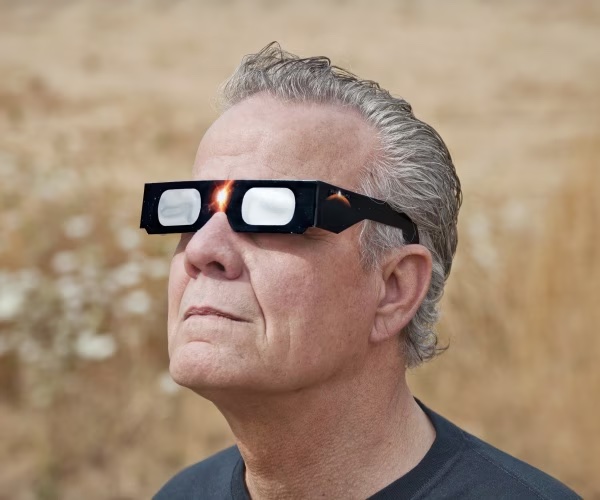Prepare Now to Safely Watch the Solar Eclipse

Dreamstime
By Lynn C. Allison From Newsmax
Excitement is mounting as Americans plan how best to view the total eclipse of the sun next Monday, April 8th. The astronomical phenomenon, in which the moon passes between earth and the sun temporarily blocking the sun’s light, won’t happen again until 2044. But if you are fortunate to be in in the path of totality, experts recommend exercising caution when viewing the eclipse that will begin over the South Pacific Ocean, passing over Mexico, the U.S. and Canada.
According to NBC News, during the celestial alignment the afternoon skies will darken for a brief period along the 100-mile wide path. People living outside the path will be able to see a partial solar eclipse, with the moon obscuring only part of the sun.
To safely view the eclipse, you should wear specialized glasses or build your own pinhole projector with a few simple supplies, even if you are viewing a partial eclipse. Don’t try to view the eclipse with your regular sunglasses or use tools like a telescope, camera, or binoculars unless they are fitted with a special filter.
“Eclipse glasses are very important to prevent photothermal injury to the retina, and not just any old glasses ─ they have to be eclipse glasses with the ISO 12312-2 filter,” says Dr. Nicole Bajic, an ophthalmologist at the Cleveland Clinic Cole Eye Institute.
NASA explains that these glasses are “thousands of times darker” than sunglasses. Without using this precaution, watching the eclipse can cause permanent eye damage. The eyeglasses retailer Warby Parker is giving away free ISO-certified solar eclipse glasses at all of their stores starting April 1 until the big day while supplies last.
The only safe time to watch the brief eclipse with the naked eye is when the moon completely blocks the sun’s bright face, says NASA. You’ll know when it’s safe when you can no longer see any part of the sun through your eclipse glasses or solar viewer.
NASA adds that it’s important to inspect your eclipse glasses or handheld viewer before using it to ensure it is in good condition and not torn or scratched. Always supervise children using solar viewers. Totality will last around three-and-a-half minutes, depending on the location, says NASA.
While NASA doesn’t approve of any particular brand of viewer, the American Astronomical Society has a list of suppliers that offer safe solar viewers and filters and warns against buying devices online just because the vendor has the lowest prices. “We recommend that the seller is identified on the site and the seller is listed on this page,” says the Society.
© 2024 NewsmaxHealth. All rights reserved.
For more on this story go to: NEWSMAX





